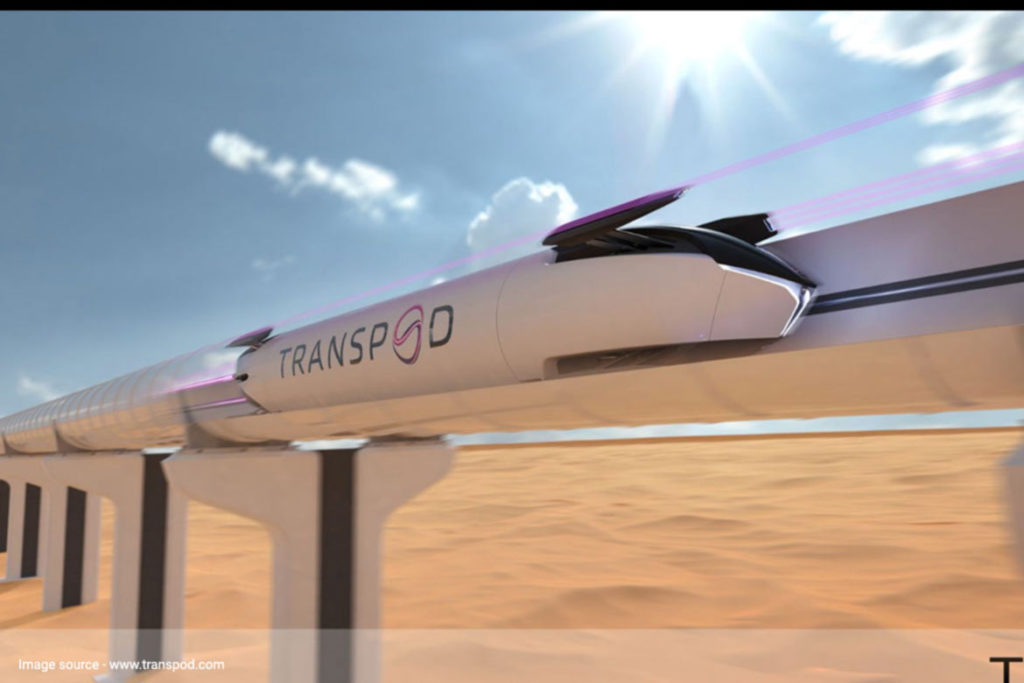Imagine, you would travel at a speed of around 600 miles or 1,000 kilometres per hour, which is two to three times quicker than the current fastest trains in the world. Well according to Canadian-French company TransPod, the FluxJet is a hybrid between a plane and a train that would use a hyperloop system for its pod and travel in a secure guideway. It is a futuristic, all-electric take on ultra-high speed ground transportation. A tube used in hyperloop technology travels inside a unique pressurised system, which enables it to move quickly and with little resistance from air resistance. It was introduced to the general public in late July and draws on a brand-new branch of physics termed “veillance flux.”
What is Fluxjet?
An innovative Canadian business has created a faster-moving hybrid between an aeroplane and a train. TransPod’s FluxJet has a top speed of nearly 1000 km/h, which the firm claims is three times quicker than a high-speed train and faster than a plane.
The TransPod Line, a “ultra-high-speed ground transportation system,” is being constructed by the Canadian startup TransPod to link the nation’s major cities and strategic areas. Their FluxJet is an all-electric vehicle based on a novel branch of physics known as “veillance flux,” which the business describes as an innovation that will change the industry.
Benefits of Fluxjet:

Read more: How these 5 technologies will transform travel and commute in the future?
It will only run on the TransPod Line network, which will connect Canada’s largest cities, according to their press release. In fact, not only will it cut down trip time in comparison with tradition trains, this hybrid vehicle will also minimise carbon dioxide output and show to be more cost-effective than going by air, the business claims.
It will cost passengers roughly 44% less than a plane ticket to transit the corridor once the TransPod Line is operational, and CO2 emissions will be reduced by 636,000 tonnes annually, according to TransPod.
The all electric train has a capacity of up to 54 passengers, two wheelchairs, and ten tonnes of freight. It has been compared to Virgin’s 600 mph Hyperloop network, which is scheduled to open in 2030.
Ryan Janzen, co-founder and CTO of TransPod, noted that reaching this milestone was a significant step forward. In order to meet passenger needs and lessen our reliance on fossil fuel-intensive jets and highways, “The FluxJet is at a nexus of scientific research, industrial development, and huge infrastructure.”

